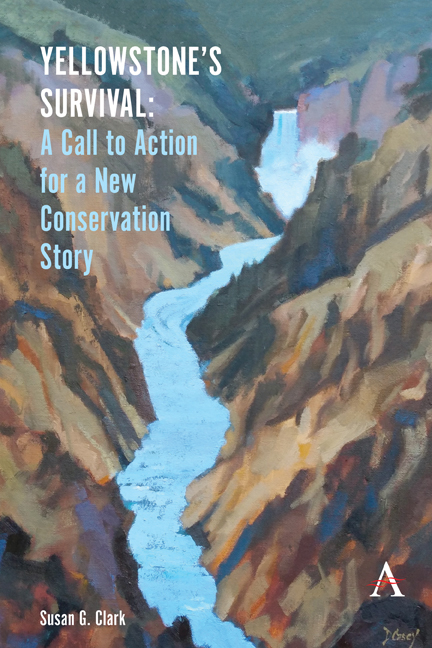 Yellowstone's Survival - A Call to Action for a New Conservation Story
Yellowstone's Survival - A Call to Action for a New Conservation Story Published online by Cambridge University Press: 22 May 2021
To conserve the scenery and the natural and historic objects and the wildlife
therein and to provide for the enjoyment of the same in such a manner
and by such means as will leave them unimpaired for future generations.
Just after daybreak on a November morning in 1975, headed north out of Jackson, Wyoming, I sat stunned watching hundreds of elk rushing across the shallow, icy Gros Ventre River. The migrating herd was 10– 20 animals wide and a quarter of a mile long; the magnificent creatures were backlit by the rising sun, steam jetting from their nostrils, with Sleeping Indian Mountain behind them on the eastern horizon. I watched, riveted by the splendor and urgency of their passage. The long-distance migrations of elk and other ungulates are one of the great natural wonders of the Greater Yellowstone region. But nearly 50 years later, some migrations are now lost, and still more are threatened. Today, no one can see that migration I came across in 1975. Now there is a bike path bridge blocking the view from the highway.
This chapter looks first at the Greater Yellowstone Ecosystem's (GYE’s) biotic significance, emphasizing migrations and large carnivores as ecological processes, and places this knowledge in the context of evolution, ecology, and ecologists. Second, the chapter examines the biotic communities and ecosystem that are the GYE today by modern science standards. This is largely a task of gathering, organizing, and summarizing facts and thinking in terms of complex evolving ecological systems and the contemporary challenges for humans living in such a place. Third, the chapter briefly recounts the region's human history or ecology from the nineteenth century to the present, including the many people, over two hundred years, who have committed themselves to protecting this land and life for us to enjoy. Finally, I survey the formal, authoritative goals for the GYE— past, present, and, of course, future. It is our task, in our time, to refine and live up to the legacy we have inherited and the responsibility we bear.
This chapter continues using the heuristic outlined in Chapter 1 about people seeking meaning (values) through society (institutions), using and affecting resources (the environment). Looking at the GYE through an ecological lens gives us an understanding of GYE’s wildlife, landscapes, and history. With this knowledge, we can best ensure a healthy future for the GYE, if we so choose.
To save this book to your Kindle, first ensure [email protected] is added to your Approved Personal Document E-mail List under your Personal Document Settings on the Manage Your Content and Devices page of your Amazon account. Then enter the ‘name’ part of your Kindle email address below. Find out more about saving to your Kindle.
Note you can select to save to either the @free.kindle.com or @kindle.com variations. ‘@free.kindle.com’ emails are free but can only be saved to your device when it is connected to wi-fi. ‘@kindle.com’ emails can be delivered even when you are not connected to wi-fi, but note that service fees apply.
Find out more about the Kindle Personal Document Service.
To save content items to your account, please confirm that you agree to abide by our usage policies. If this is the first time you use this feature, you will be asked to authorise Cambridge Core to connect with your account. Find out more about saving content to Dropbox.
To save content items to your account, please confirm that you agree to abide by our usage policies. If this is the first time you use this feature, you will be asked to authorise Cambridge Core to connect with your account. Find out more about saving content to Google Drive.